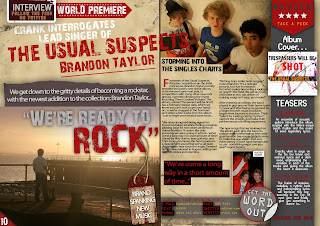This is the questionnaire in which I handed out to my class. I printed 15 questionnaires to get target audience research for my magazine front cover, contents and double-page spread. After I handed it out, I am going to show the results in the form of graphs, and then start creating my front cover, contents page and double-page spread while taking these into account.
These are the results that I got after collecting in my questionnaire, from my target audience. From this, I will have an idea how my front cover, contents page and double-page spread will look like.
By receiving this result, I found out that 60% of people would like to have the image on the front cover take up the majority of the page.
60% of people would like my magazine to have cover lines that go over the main image. This makes the magazine look more professional, as it is what the majority of magazines do nowadays.
More people thought that the masthead should go along the top, and in the centre of the magazine, than the top left, top right and along the side. This is also a common feature on magazines nowadays.
By asking the audience this question, I would find out whether they would like the name "Bass" for a music magazine. The majority of people thought that this was a good name, so I decided this was what my magazine was going to be called.
By looking at this, I see that I should only put 1 image on the contents page, as this is what the majority of people would like best.
By asking this question, I wanted to find out whether I should put the writing on the contents page in columns or not. The majority of people didn't think that they wanted columns on the contents page, so therefore I would not add columns to my contents page.
The majority of people would like the same style of font that is used on the front cover, to be used on the contents page. This would also make it more professional, and would create a house-style theme.
The majority of people would like to see 3 columns of writing on the double-page spread, meaning that there would be 3 columns of the interview.
By reading this, it is obvious that the majority of people would like the see the same font that is on the front cover and contents page to be on the double-page spread.
This graph shows that nearly half of the people I asked thought that the orange, black, and blue colour is their favourite. This is the colour I will use for my magazine.
This shows that most of the people that I asked would like to see the colour scheme carry on through the front cover, contents page and double-page spread. This is a common characteristic of a magazine.























